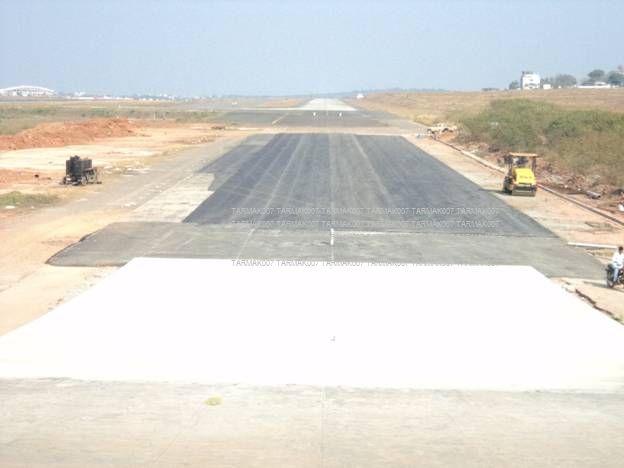Navy's Tejas fighter revs for take-off
The Indian Navy has signalled strong support to the naval version of the Tejas Light Combat Aircraft (LCA), even before the indigenous fighter makes its first flight next month. In New Delhi, on Wednesday, the defence ministry's apex Defence Acquisition Council (DAC) sanctioned the building of eight Naval LCA aircraft by Hindustan Aeronautics Limited (HAL).
"The eight fighters will be a mix of single-seat fighters and twin-seat trainers. The money for these has also been allocated," says a senior Ministry of Defence official who was at the DAC meeting.
The Rs 3,650 crore Naval LCA programme was sanctioned in March 2003. Two prototypes are almost complete, the first a twin-seat trainer and the second a single-seat fighter. The eight fighters sanctioned on Wednesday are "Limited Series Production" or LSP fighters. These will be used for flight-testing, a painstaking process that could last two years or more. Once flight-testing is completed, HAL will establish a full-scale production line.
The Naval LCA is a crucial cog in the navy's expansion and, therefore, in India's increasingly visible maritime strategy. It is designed to fly from an aircraft carrier, a floating airfield that can project Indian power across the oceans. India has already bought Russian MiG-29K medium fighters to equip the INS Vikramaditya (formerly the Gorshkov) an aircraft carrier acquired from Russia. But another two (and possibly three) indigenous Vikrant-class aircraft carriers being built at Cochin Shipyard Ltd will field the Naval LCA, along with a medium fighter.
With the first of these, INS Vikrant, at an advanced stage of construction in Kochi, the navy is keen that development of the Naval LCA proceeds alongside. Earlier this month, the normally soft-spoken navy chief, Admiral Nirmal Verma, publicly criticised the Aeronautical Development Agency (ADA oversees the LCA programme) for placing the Naval LCA programme on the back burner, while focusing on the air force version of the Tejas.
The admiral's words have goaded HAL into action. Business Standard has been told that the Naval LCA will take to the air in March, a landmark event for the navy.
"The Naval LCA will definitely fly in March. We are doing ground runs and starting low-speed taxi trials, in which the fighter rolls on the runway under its own power. Then we will do some high-speed taxi trials, in which the fighter will accelerate to take-off speed; but when its nose lifts off the ground, we will slow down without actually taking off. Only after that will the first flight actually take place," says PV Deshmukh, HAL's officiating CMD.
The Rs 10,397 crore air force Tejas project has obtained initial operational clearance (IOC), and will soon join the IAF's fleet. But the Naval Tejas presents additional design challenges, such as being able to take off from an aircraft carrier's ski-jump after accelerating for just 200 metres. Even more challenging are repeated carrier deck landings, in which a hook on the aircraft snags on an "arrestor cable" on the deck, forcing the aircraft to a standstill in just 90 metres. These landings, in which the fighter slams into the carrier deck at more than 7 metres per second, are often described as "controlled crashes."
The navy and ADA will extensively test the Naval LCA on land before venturing onto an aircraft carrier at sea. A Shore-Based Test Facility (SBTF) has been created in Goa, which replicates the dimensions and conditions of a carrier deck, including the arrestor and gear that brings the aircraft to a quick halt; and the optical landing system that allows the pilot to "aim" his fighter at the arrestor wire spread out on the carrier deck. After extensive SBTF testing, the Naval LCA will face the crucial challenge of landing and taking off from an actual aircraft carrier.
The navy's two prototypes and eight LSP fighters will be powered by General Electric GE F-404 engines. Meanwhile, ADA has selected the more advanced and powerful GE F-414 engine for the LCA Mark II. This engine will also power future Naval LCAs. With 15 per cent more thrust, the GE F-414 will be useful in taking off from an aircraft carrier deck.





